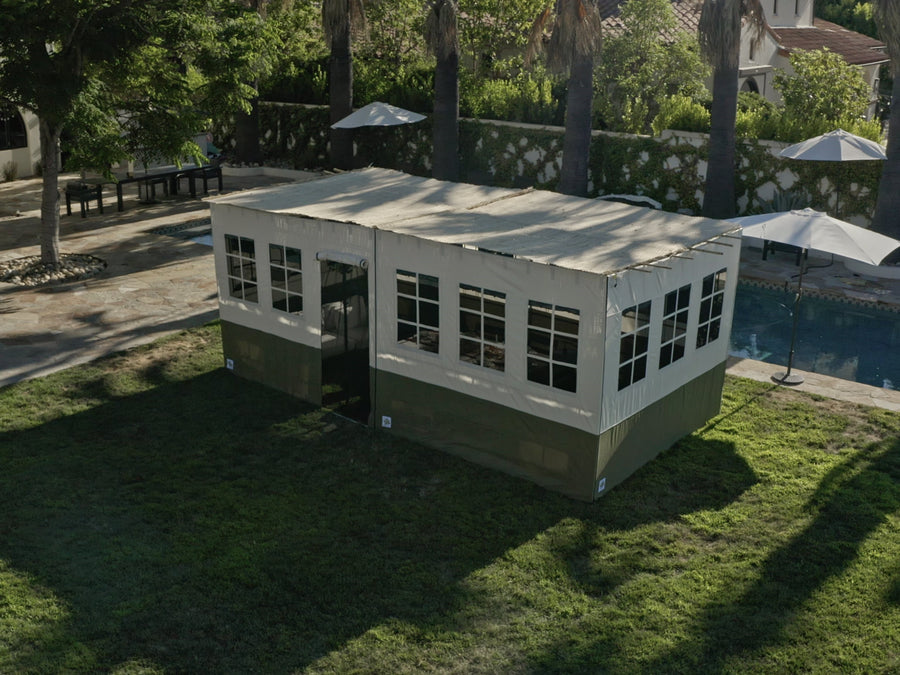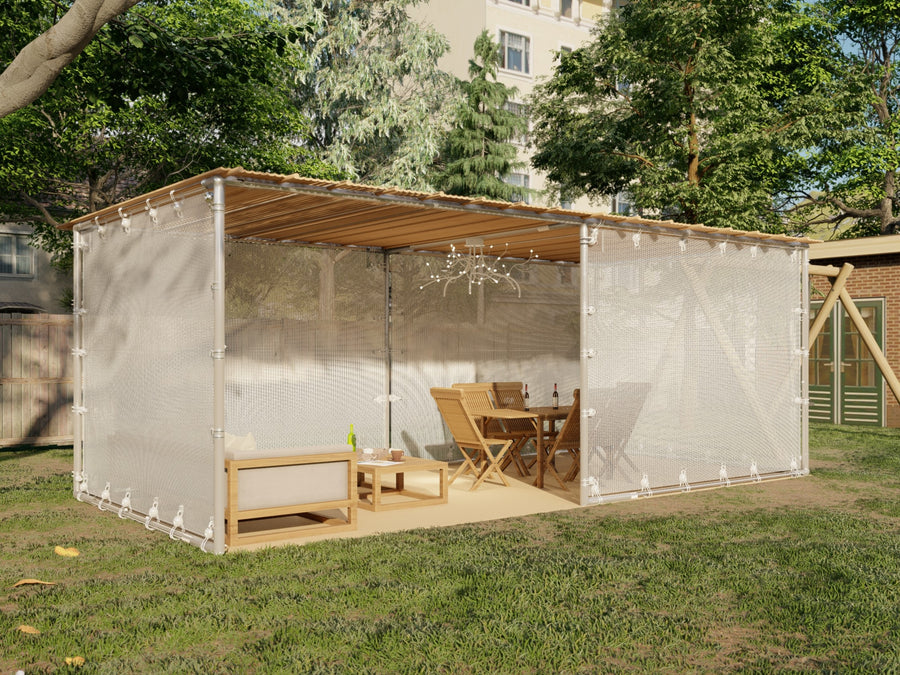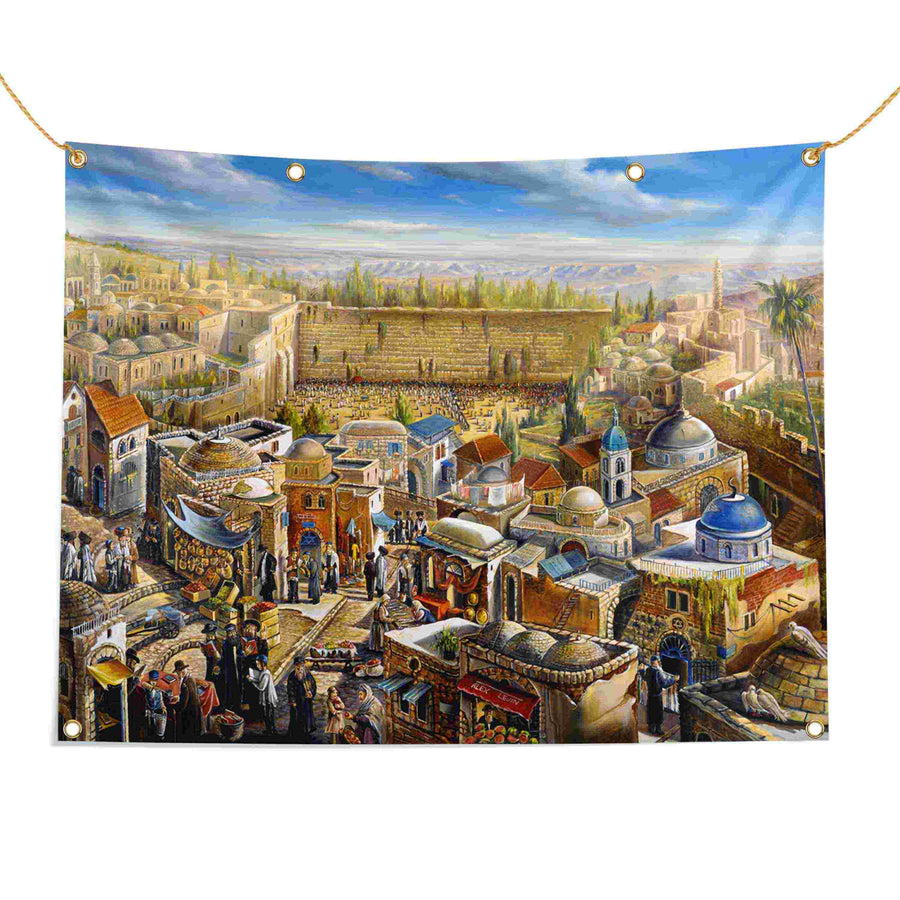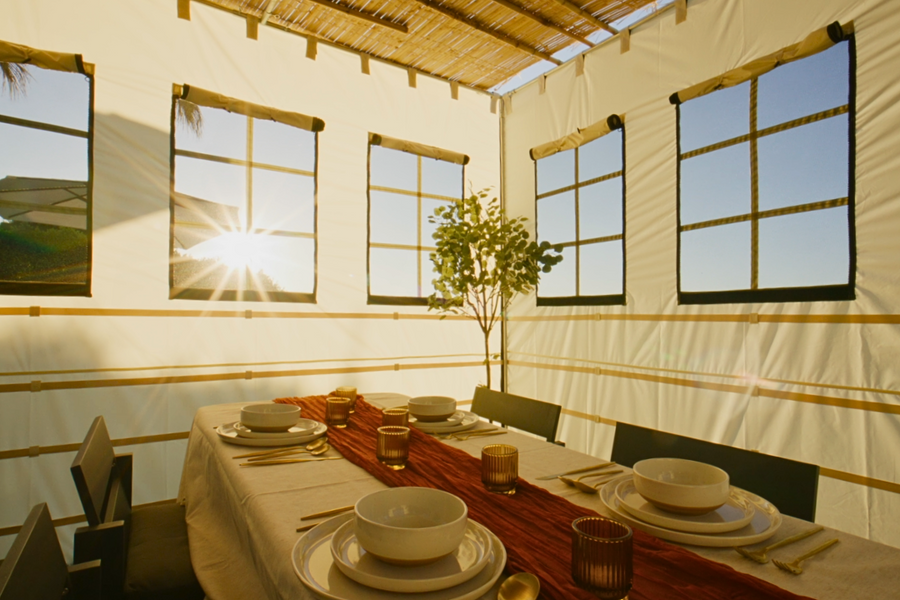

Table of contents
How burlap dreams, Seattle rain, and Talmudic measurements are reshaping your Sukkah game.
Sukkot is that wonderful time of year when Jews around the world leave their cozy homes and march outside to dine (and for the ambitious, sleep) under a roof made of sticks and palm fronds. Or maybe bamboo mats. Or perhaps... just fabric?
Welcome to the sometimes mystifying world of Schach, the organic, temporary, and very Jewish roof of your Sukkah. And like everything in Jewish law, the story of what makes Schach kosher isn’t as straightforward as it seems.
Let’s unravel some of the more bizarre and brilliant halachic debates, and maybe – just maybe – you’ll come out a little more ready to brave the Sukkah this year. Even if you live in Seattle.
Can You Schach With Sackcloth? Asking for a Friend
You’re standing in a craft store. You see rolls of burlap, hemp, maybe a bit of jute. You think to yourself: “Hey, these are plants. They’re not attached to the ground. They’re not tools. Boom – kosher Schach, right?”
Wrong. Probably.
The Processed Problem
The Shulchan Aruch (Orach Chaim 629:3) says processed plant fibers – like those that have been pounded, combed, and readied for weaving – are invalid for Schach. Why?
Because:
They’re one thread away from being ritually impure. Once it's spin-worthy, it's tamei-worthy (a.k.a. susceptible to impurity).
They’ve lost their plant-y vibe. If it no longer looks like it came from a field, that’s a red flag.
Pillow filler alert! If it’s usable as stuffing, it may fall under the same impurity rules.
The Taz notes that even before it's woven into cloth, if it's obviously on its way to becoming a textile, it’s already a rabbinic no-no.
Size Is Critical
The Mishnah in Keilim 27:1 says cloth becomes tamei once it’s 3x3 fingerbreadths. So even if you have a patch of fabric that’s made from 100% kosher material, if it's large enough to be called a "cloth" (around 8x8 cm), it may already be unfit.
TL;DR: Fabric made from plant fibers like hemp or jute might technically come from the ground, but once it's been processed, it likely joins the great unkosher schach heap in the sky.
“Let It Rain!” Or… Not? The Soggy Saga of Waterproof Schach
Seattle, Washington. A city where “chance of sunshine” is basically a punchline over Sukkot. It’s no wonder local Jews wonder: Can I engineer a waterproof Schach? Something leafy, plant-based, and arranged like roof tiles?
It’s a brilliant idea. But halachically? It’s complicated.
Rain Must Fall
According to Tosafos (Sukkah 2a), a Sukkah that prevents rain is too permanent. Rain, in fact, is almost a required feature of your Sukkah. If you can’t get wet, you’re not doing it right.
Rabbeinu Tam (quoted in the Rosh, Siman 11) argued that a Sukkah must allow rain in. His proof? If the rain doesn’t fall through, why would the Mishnah say you can leave the Sukkah when it rains?
The Bach and Levush take Rabbeinu Tam seriously. And Mishna Berurah says that while a waterproof Sukkah may work after the fact (bedieved), it’s not the gold standard.
But wait! According to the Piskei Teshuva, someone built a dual-layer gutter Schach system – and Rav Eliyashiv and Rav Chaim Kanievsky approved. Others, like Minchas Yitzchak, weren’t as generous.
So stock up on oil, brush up on your Maoz Tzur, and remember: eight nights of light are just the right amount of miracle.
Verdict?
If you’re building a Sukkah that doubles as a greenhouse roof, best consult your LOR (local orthodox rabbi). Or get a waterproof tarp... and learn how to roll it back at a moment’s notice.
The Not-So-Fine Print: How Much Bad Schach Is Too Much?
You built your Sukkah. You painstakingly layered every bamboo stick. And then your cousin Moishy decides to hang his plastic Star of David right in the middle.
Panic.
Did he just invalidate your entire roof?
Shulchan Aruch to the Rescue
According to Shulchan Aruch O.C. 632:1, four tefachim (about 12–14 inches) of invalid Schach in the middle of the roof ruins it. On the side, you get more leeway – up to four amot (around 6 feet!).
So yes, if Moishy’s sparkly ornament is smaller than four tefachim and not in the middle, you're still in the halachic clear. Just maybe hide the glitter next time.
Mind the Gap: How Much Empty Space is Kosher?
You notice gaps in your Schach where light’s pouring in like a divine spotlight. Is that charming ambiance – or an invitation to a pasul (invalid) Sukkah?
The Air Up There
The Mishnah in Sukkah 17a and Shulchan Aruch 632:2 tell us:
A gap of 3 tefachim (~9–10 inches) of airspace invalidates the Sukkah – whether it's in the middle or near the wall.
But if it’s less than 3 tefachim, you’re in the clear – though you shouldn’t sleep under it.
The Rama adds: It only disqualifies sleep if the gap spans the entire length.
So measure your light shafts. And maybe don’t put your pillow directly under that celestial beam. Or if you’d just like to skip the headaches altogether, grab yourself some ready-made kosher l’Mehadrin bamboo Schach mats.
Conclusion: Schach Happens – But Don’t Let It Get You Down
Sukkot is about impermanence. It’s about leaving comfort and embracing G-d’s protection in the natural world – even if that world includes partially processed flax or surprise Seattle downpours.
So whether you're stacking palm fronds, engineering leaf-tile roofing, or debating whether that strip of burlap counts as a cloth, remember: the Sukkah is basically all about fulfilling the mitzvah properly.
Just maybe don’t hang a disco ball made of plastic. No one needs that kind of halachic stress.












